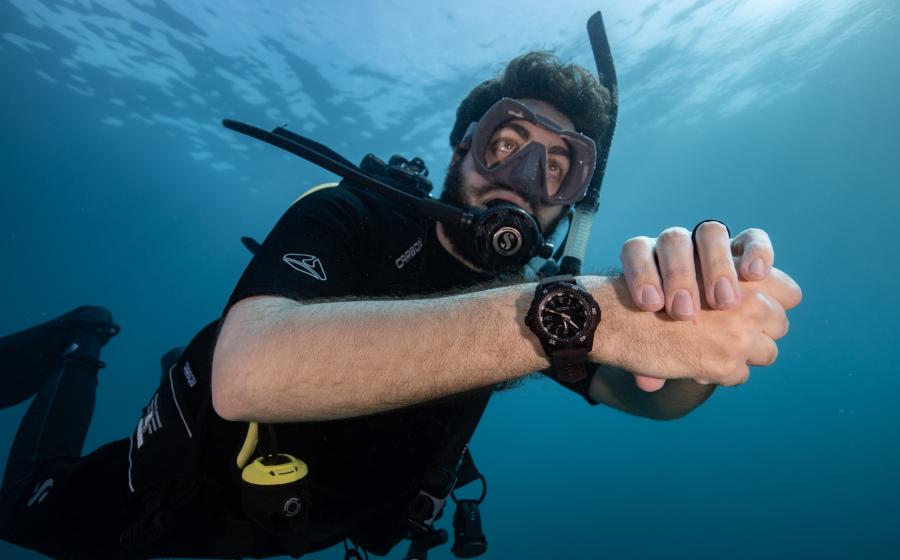Dive Rescue Groups Discover Scanning Sonar

More and more law enforcement agencies and dive rescue groups are discovering the benefits of using scanning sonar in their underwater search operations. One key advantage of scanning sonar is its ability to produce a "picture" of the underwater environment regardless of water visibility. It can locate submerged objects from drowning victims to sunken vessels. Using this sonar dramatically reduces the time divers spend in the water, which is extremely important in difficult or dangerous situations. Another advantage of scanning sonar is its economical cost compared to side scan systems, which makes it an affordable alternative for many smaller departments.
The way scanning sonar operates in water is similar to the way radar operates in air. The sonar transducer transmits a sound wave in the form of a fan shaped beam that sweeps a circle up to 250 feet in diameter. The beam reflects off any object lying on the bottom of a river, lake, or ocean. The reflected wave returns to the transducer where it is received and transmitted to the surface. Topside, the sonar signal is processed and displayed on a standard laptop computer.
The software has a host of features that allow the scan to be tailored to fit the needs and preferences of the search operation. The operator can select the size of the search area and also decide whether to scan a complete circle or just a portion of it. A variety of color schemes in 256 shades are available to display the sonar images. There is a choice of step sizes and sweep speeds, and a sizing tool shows the length and width of the target. Scanned data files are stored on the PC's hard drive along with the boat's GPS position, time date, and other pertinent data. Recorded files can be played back at any time. Small file sections and screen shots can be copied for emailing.
JW Fishers is one of the primary suppliers of sonar to the agencies charged with public safety. Two groups that have recently added Fishers SCAN-650 to their arsenal of underwater search equipment are a rescue squad in Vermont and a sheriffs department in California. Members of the Vermont rescue squad visited Fishers factory for a demonstration of the system. Several targets were scanned including a mannequin and a handgun. The mannequin was weighted and dropped to the bottom of a river. The SCAN-650 clearly displayed each submerged target. Team members then discussed an occasional need to search for vehicles which sometimes mysteriously end up in local lakes and rivers. Seeing a scanned image of a sunken car convinced the group this would be the perfect tool for their underwater search operations.
For more information on scanning sonar or a color brochure on all of Fishers quality underwater search products, contact Christopher Combs at J.W. Fishers Mfg Inc., 1953 County St., East Taunton, MA 02718. Phone (800) 822-4744 or (508) 822-7330. Fax is (508) 880-8949. E-mail to jwfishers@aol.com or check out the website at www.jwfishers.com.

More and more law enforcement agencies and dive rescue groups are discovering the benefits of using scanning sonar in their underwater search operations. One key advantage of scanning sonar is its ability to produce a "picture" of the underwater environment regardless of water visibility. It can locate submerged objects from drowning victims to sunken vessels. Using this sonar dramatically reduces the time divers spend in the water, which is extremely important in difficult or dangerous situations. Another advantage of scanning sonar is its economical cost compared to side scan systems, which makes it an affordable alternative for many smaller departments.
The way scanning sonar operates in water is similar to the way radar operates in air. The sonar transducer transmits a sound wave in the form of a fan shaped beam that sweeps a circle up to 250 feet in diameter. The beam reflects off any object lying on the bottom of a river, lake, or ocean. The reflected wave returns to the transducer where it is received and transmitted to the surface. Topside, the sonar signal is processed and displayed on a standard laptop computer.
The software has a host of features that allow the scan to be tailored to fit the needs and preferences of the search operation. The operator can select the size of the search area and also decide whether to scan a complete circle or just a portion of it. A variety of color schemes in 256 shades are available to display the sonar images. There is a choice of step sizes and sweep speeds, and a sizing tool shows the length and width of the target. Scanned data files are stored on the PC's hard drive along with the boat's GPS position, time date, and other pertinent data. Recorded files can be played back at any time. Small file sections and screen shots can be copied for emailing.
JW Fishers is one of the primary suppliers of sonar to the agencies charged with public safety. Two groups that have recently added Fishers SCAN-650 to their arsenal of underwater search equipment are a rescue squad in Vermont and a sheriffs department in California. Members of the Vermont rescue squad visited Fishers factory for a demonstration of the system. Several targets were scanned including a mannequin and a handgun. The mannequin was weighted and dropped to the bottom of a river. The SCAN-650 clearly displayed each submerged target. Team members then discussed an occasional need to search for vehicles which sometimes mysteriously end up in local lakes and rivers. Seeing a scanned image of a sunken car convinced the group this would be the perfect tool for their underwater search operations.
For more information on scanning sonar or a color brochure on all of Fishers quality underwater search products, contact Christopher Combs at J.W. Fishers Mfg Inc., 1953 County St., East Taunton, MA 02718. Phone (800) 822-4744 or (508) 822-7330. Fax is (508) 880-8949. E-mail to jwfishers@aol.com or check out the website at www.jwfishers.com.










